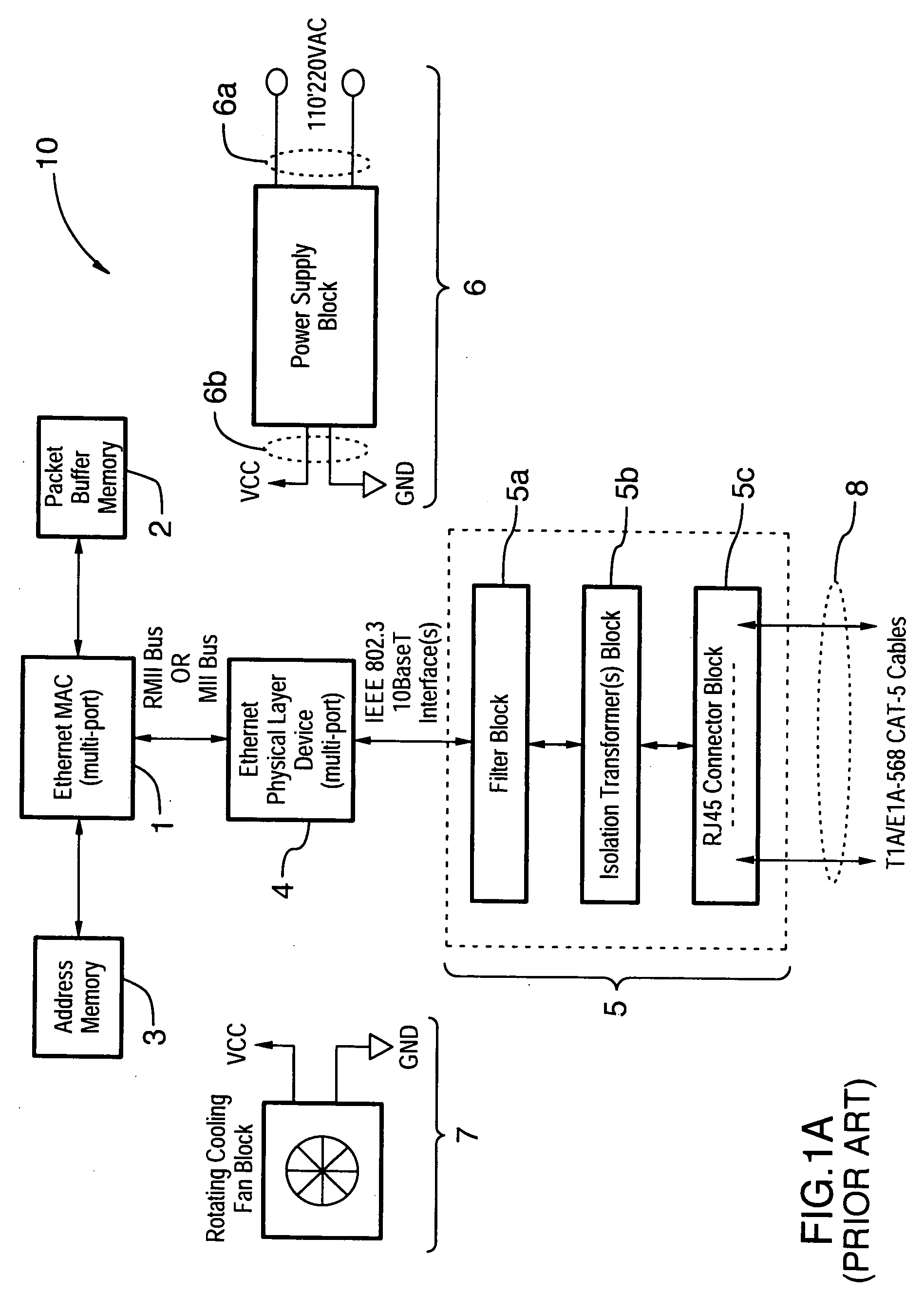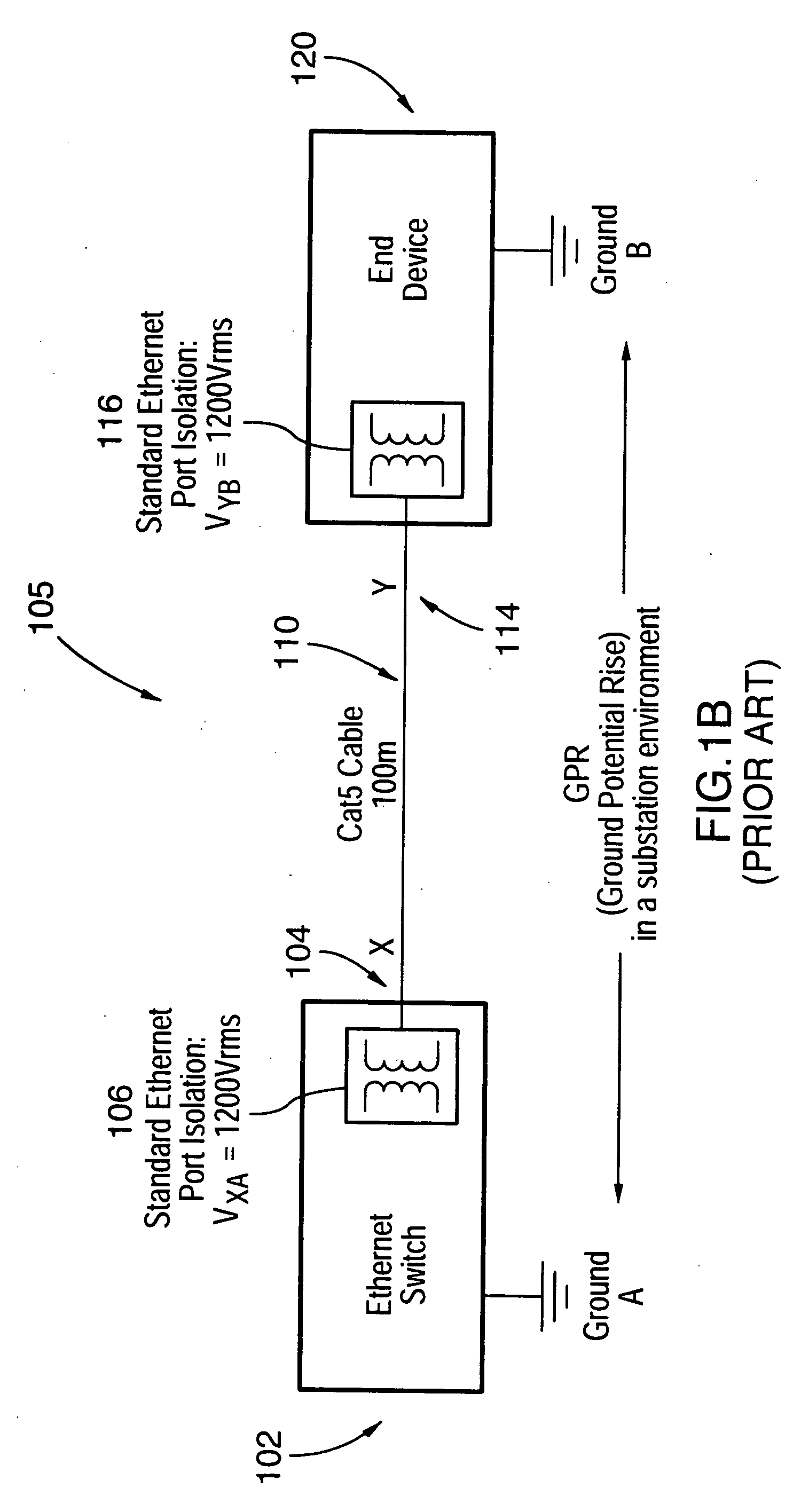Environmentally hardened ethernet switch
- Summary
- Abstract
- Description
- Claims
- Application Information
AI Technical Summary
Benefits of technology
Problems solved by technology
Method used
Image
Examples
Embodiment Construction
[0055] A preferred embodiment of the present invention and its advantages can be understood by referring to the present drawings. In the present drawings, like numerals are used for like corresponding parts of the accompanying drawings.
[0056]FIG. 2 illustrates an electronic circuit block diagram shown generally by reference numeral 20, for an Ethernet switch according to one embodiment of the present invention. The circuit consists of an Ethernet Media Access Controller (MAC) block 21 with integrated packet and address memory which provides a plurality of communications ports each adhering to the RMII (Reduced Media Independent Interfaces) signaling specification as put forth by the version 1.2 of the RMII Consortium. Such a block 21 may be implemented using Marvell 88E6050 or a Galileo GT48350.
[0057] These RMII ports interface to a multi-port physical layer device 22, referred to as a PHY, which converts the RMII signals to differential transmit and receive signal pairs in accord...
PUM
 Login to View More
Login to View More Abstract
Description
Claims
Application Information
 Login to View More
Login to View More - R&D
- Intellectual Property
- Life Sciences
- Materials
- Tech Scout
- Unparalleled Data Quality
- Higher Quality Content
- 60% Fewer Hallucinations
Browse by: Latest US Patents, China's latest patents, Technical Efficacy Thesaurus, Application Domain, Technology Topic, Popular Technical Reports.
© 2025 PatSnap. All rights reserved.Legal|Privacy policy|Modern Slavery Act Transparency Statement|Sitemap|About US| Contact US: help@patsnap.com



